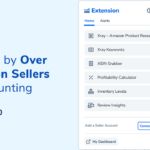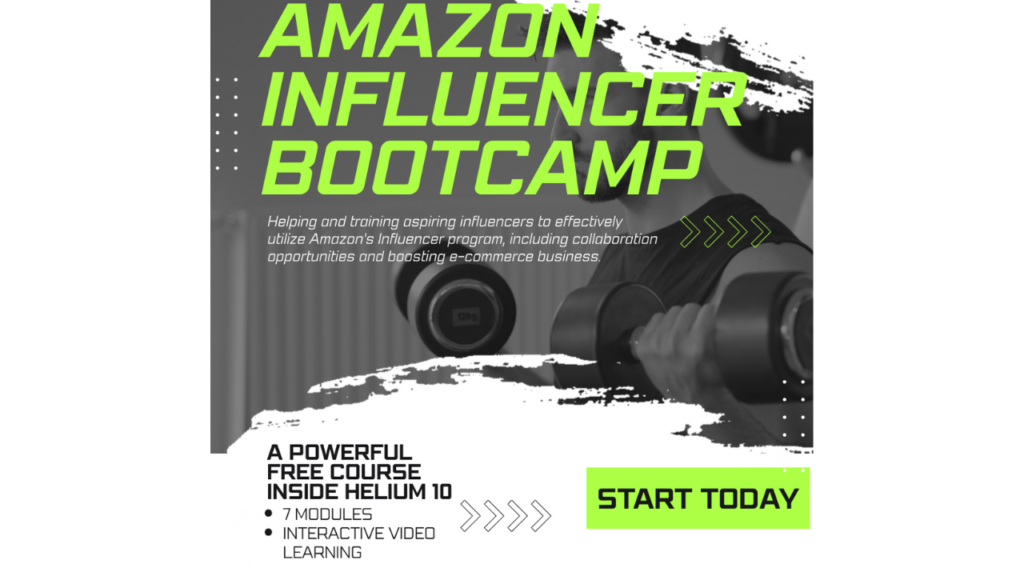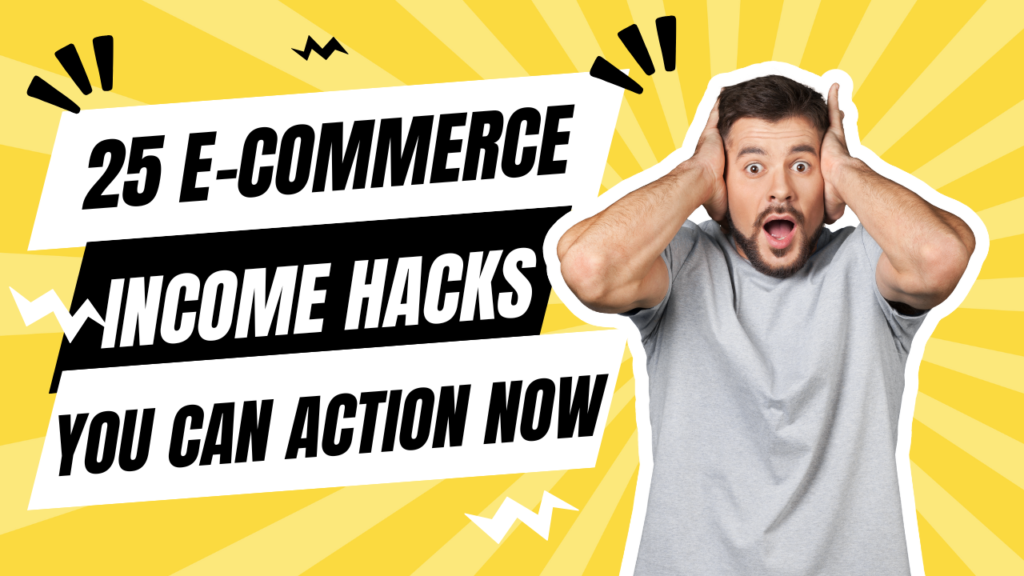Introduction to Ecommerce
Have you ever bought something online while lounging on the couch? If so, you’ve experienced an ecommerce business in action. Ecommerce simply refers to the buying and selling of goods or services over the internet
Sellers list products on a website or platform, and buyers can shop from anywhere at any time using a computer or phone. Payments are made digitally, and orders are fulfilled without the need for a physical storefront. In other words, if you’ve ordered a book from Amazon or a pair of shoes from an online boutique, you’ve participated in ecommerce.
Just how big is ecommerce today? Consider this: global online sales were forecast to reach about $6.3 trillion in 2024, with even more growth in the years to follow.
(Yes, that’s trillion with a “T”!) By 2025, estimates put worldwide ecommerce revenue around $6.9 trillionover one-fifth of all retail sales. These huge numbers highlight how mainstream online shopping has become, and they explain why so many entrepreneurs are drawn to the idea of running an online business. The allure of ecommerce is clear: you can start a business with relatively low overhead, run it from your laptop, and potentially reach customers all over the globe 24/7.
However, jumping into ecommerce isn’t all smooth sailing. Like any business, selling online has its advantages and disadvantages. It’s important to understand both the upsides and the downsides before you dive in. In this article, we’ll break down the key advantages of running an ecommerce business (the good stuff that makes it so appealing), as well as the disadvantages (the not-so-fun parts you need to watch out for).
We’ll also discuss common challenges that ecommerce entrepreneurs face in their day-to-day operations and share some practical tips for overcoming those hurdles. Finally, we’ll look at how tools like Helium 10 can support your ecommerce success by making tasks like product research and listing optimization easier. So, let’s explore what running a general ecommerce business is really like in today’s world!
Advantages of Running an Ecommerce Business
Running an ecommerce business offers a lot of benefits and perks compared to traditional brick-and-mortar stores. Here are some of the biggest advantages:
- Lower Startup Costs and Overhead: Starting an online store is usually much cheaper than opening a physical shop. You don’t need to rent retail space or furnish a storefront – often you just need a website and some inventory. In fact, ecommerce allows you to launch a business with relatively low upfront costs (no expensive leases or large staff necessary). Many platforms (like Shopify or Etsy) make it inexpensive to set up an online shop. Ongoing overhead tends to be lower too – for example, you won’t be paying utility bills for a store or dealing with as many middlemen. This lower barrier to entry is a huge draw for new entrepreneurs.
- Global Market Reach: With an online business, you can reach customers far beyond your local neighborhood. A physical store is limited to people who walk or drive to that location, but an ecommerce store is open to the entire world. Anyone with an internet connection can discover your products. This means a vastly larger pool of potential buyers. You could be based in a small town and sell to customers in London, New York, or Tokyo just as easily. Modern e-commerce platforms and marketplaces support international sales and shipping, making it straightforward to serve a global customer base. That kind of reach is something a traditional business could only dream of.
- 24/7 Availability and Convenience: An ecommerce website never needs to close its doors. Your online store can take orders 24 hours a day, 7 days a week, even while you sleep. Shoppers love the convenience of being able to buy what they want, when they want. Whether it’s a midnight impulse purchase or an early-morning order before work, you’re always “open” for business. This round-the-clock availability can boost your sales since you’re not limited by the hours on a clock. Customers also enjoy the convenience of avoiding traffic, lines, and store crowds – they can shop from the comfort of home, which encourages more frequent buying.
- Personalization and Data-Driven Marketing: Selling online makes it easier to personalize the shopping experience for each customer. You can use data and analytics to understand customer behavior and preferences. For example, an ecommerce site can track what products a customer views or buys, and then recommend related items or show targeted ads for things they’re likely to want. You can segment your email marketing lists based on purchase history and send tailored offers to specific groups. This level of personalization – greeting customers by name, suggesting “you might also like…” add-ons, etc. – is much harder to do in a physical store. It helps build customer loyalty and can increase sales by presenting shoppers with items that match their interests. Essentially, ecommerce lets you leverage customer data to do smarter marketing.
- Scalability and Flexibility: Ecommerce businesses are highly scalable. With a traditional store, if you suddenly double your customers, you might run out of space or stock; you’re constrained by your physical location. Online, you can grow your operations more easily. You can add more inventory to a warehouse or even switch to drop-shipping (where a supplier ships products directly) to handle more orders without needing a bigger physical space. It’s relatively easy to expand your product range or even run multiple online stores, since everything is managed digitally. This flexibility also extends to you as the business owner – you can often run your store from anywhere, and you have the freedom to quickly tweak your website, try new marketing campaigns, or pivot to selling new products based on market demand.
- Access to Analytics and Customer Insights: Running an online store means you have a wealth of data at your fingertips about how people shop. You can track how customers find your site (through Google, social media, etc.), see which products are viewed most, analyze cart abandonment rates, and more. Tools like Google Analytics can show you, for instance, that a product page is getting a lot of views but not sales – telling you something might be turning customers off. These granular insights help you make informed decisions to improve your business. In a physical store, it’s hard to know how many people looked at a product but didn’t buy; online, you get detailed metrics on every step of the customer journey. This data-driven insight is a big advantage of ecommerce – it takes some of the guesswork out of marketing and product management.
In summary, the advantages of ecommerce include lower costs, a wider reach, around-the-clock sales, personalized marketing opportunities, easy scalability, and valuable data insights. All of these can make running an online business extremely rewarding when things go well.
Disadvantages of Ecommerce
Despite all the benefits, running an ecommerce business also comes with some significant disadvantages and challenges. It’s important to be aware of these potential downsides:
- High Level Competition: The flip side of low barriers to entry is that everyone can start an online store – including your competitors. Ecommerce is a highly competitive arena with thousands of sellers in virtually every niche. If you come up with a great product idea, chances are there are already a bunch of other websites selling something similar. Because customers can easily compare products and prices online, you may find yourself in a price war or struggling to get your site noticed in a crowded market. Big platforms like Amazon marketplace are especially competitive; you might be competing directly against well-established sellers or even Amazon’s own products. This stiff competition means you’ll have to work hard (and possibly spend more on marketing) to stand out. As one source put it, because it’s so easy to start an online business, ecommerce markets can get saturated quickly, so you must be hyper-diligent with your marketing and branding to gain an edge.
- No Physical Interaction or Try-Before-You-Buy: In an online store, customers can’t touch, feel, or try on the products before purchasing. This is a big disadvantage for certain product categories. For example, a customer might be hesitant to buy clothing if they can’t try it on for size, or they might avoid buying a couch if they can’t feel how comfy it is. Even with great product photos and videos, ecommerce can’t fully replicate the hands-on experience of shopping in a physical store. There’s also no in-person customer service – if buyers have questions or issues, they can’t flag down a sales associate on the spot. This lack of physical interaction can lead to lower trust or satisfaction. Shoppers have to rely on product descriptions, reviews, and return policies as a safety net. And while technologies like augmented reality are improving (for instance, letting you virtually see how furniture might look in your room), it’s still not the same as try-before-you-buy. Additionally, online customers don’t get the instant gratification of walking out with the item in hand – they have to wait for shipping, which can dampen the excitement. In short, the impersonal nature of ecommerce is a disadvantage, and it can result in more returns or customer uncertainty.
- Shipping and Logistics Challenges: In ecommerce, delivery is part of the deal. Unlike a store where the customer walks out with their purchase, online sellers must get the product to the buyer’s doorstep. Managing shipping and logistics can be complicated and costly. Products need to be stored (in your home, a warehouse, or via a fulfillment service) and then packaged and shipped for each order. Shipping costs can eat into your margins, especially when customers expect fast or free delivery. Customers also might abandon their cart if they see high shipping fees at checkout. There’s also the risk of shipping delays, lost packages, or inventory shortages that can sour the customer experience. If you sell internationally, customs and import/export rules add another layer of complexity. Handling returns is another logistical headache – you have to decide whether to offer free returns, how to process them, and what to do with returned merchandise. All told, fulfillment is a major piece of the ecommerce puzzle, and if not managed well, it can become a big disadvantage compared to brick-and-mortar stores where customers get items immediately.
- Technical Issues and Website Maintenance: Running an online business means you are also running a website (or relying on a platform’s technology), which comes with its own challenges. Not everyone is a tech wizard, and setting up an ecommerce site can require some know-how or investment in web developers. Even once your site is up and running, you’ll need to keep it fast, secure, and bug-free. Websites can crash or experience downtime – and if your site goes down, you’re essentially “closed” for business until it’s fixed. There’s also the ongoing need to update your site (adding new products, fixing broken links, ensuring compatibility with new browsers or devices). For those not tech-savvy, this learning curve can be frustrating. Additionally, you must ensure your site is mobile-friendly, because a huge chunk of online shopping happens on phones. Technical issues aren’t just on your side; customers might need a bit of tech savvy to navigate online shopping too (e.g. using digital wallets or troubleshooting a failed payment). If either party hits a tech snag, it can hurt sales. In summary, technical difficulties and maintenance are an inherent disadvantage of ecommerce – there’s no IT department running your corner store’s cash register, but your online shop’s checkout might need one!
- Security and Trust Concerns: Both sellers and buyers face some risks in the online world that don’t exist with face-to-face transactions. As an ecommerce owner, you will be handling sensitive customer data – like credit card numbers, addresses, and contact info. This makes your website a potential target for hackers and cybercriminals. A data breach or security failure can be devastating, leading to loss of customer trust and even legal liabilities. Unfortunately, ecommerce sites of all sizes can be targets of attacks like phishing scams, malware, or denial-of-service attacks. You have to invest in security measures (SSL certificates, secure payment gateways, fraud detection) to protect your customers and your business. From the customer’s perspective, there can be hesitation to trust a new online store, especially if it’s not well-known. Shoppers worry about scams or whether their payment info is safe. Unlike a physical store where the risk feels lower (handing your card to a cashier you see in person), online you’re sending your info into the digital void. This means building trust is crucial in ecommerce – through site security, clear policies, and social proof like customer reviews. Security concerns and the need to establish trust are definite disadvantages that online businesses must overcome to convince people to buy.
In short, while ecommerce opens a world of opportunity, it also has notable drawbacks: intense competition, no tactile shopping experience, the burden of shipping logistics, technical maintenance demands, and concerns about security and trust. Successful online entrepreneurs learn to mitigate these disadvantages as much as possible.
Common Challenges Ecommerce Entrepreneurs Face
Beyond the broad pros and cons, what is it actually like to run an ecommerce business day-to-day? New ecommerce entrepreneurs often encounter a set of common challenges as they try to grow their business. Here are some of the typical hurdles and pain points:
- Finding the Right Products and Niche: One of the first big challenges is deciding what to sell. The ecommerce space is crowded, so picking a product niche that isn’t over-saturated (but still has demand) can feel like searching for a needle in a haystack. Many entrepreneurs struggle with product research – you might be asking, “What can I offer that people want and that isn’t already being sold by 100 other sites?” Choosing the wrong product or a super competitive niche can set you back before you even start. It’s a challenge to balance your passion (selling something you care about) with market reality (ensuring there’s a market gap or unique angle you can fill). Successful sellers often spend a lot of time on market research and use tools to analyze sales data and trends before committing to a product line.
- Driving Traffic to Your Website: “If you build it, they will come” doesn’t automatically apply in ecommerce. Getting eyeballs on your online store is a constant challenge. With millions of websites out there, how do you attract customers to yours? New ecommerce businesses often struggle with digital marketing – things like SEO (search engine optimization) to rank on Google, running effective social media campaigns, or paying for online ads without blowing the budget. It can be disheartening to launch a beautiful website and then hear crickets because potential customers simply don’t know you exist. Crafting and executing a marketing strategy (content marketing, social media, email newsletters, influencer partnerships, etc.) is a major undertaking. Allocating budget wisely between channels (SEO vs. Facebook ads, for example) is tricky, especially when you’re not sure which will yield results. Many entrepreneurs have to experiment to find the right mix that drives consistent traffic to their store.
- Converting Visitors into Customers: Even after you start getting traffic, the battle isn’t over – you need to actually convert those visitors into paying customers. Website conversion rate optimization is a huge focus for online businesses. On average, a large portion of visitors will leave without buying anything. In fact, roughly 70% of online shopping carts are abandoned without the purchase being completed. That means for every 10 customers who add an item to their cart, about 7 might bail out – due to reasons like high shipping costs, complicated checkout process, or simply changing their mind. High cart abandonment and low conversion rates are common challenges. Entrepreneurs have to work on making the user experience smooth and convincing: ensuring the site is easy to navigate, pages load quickly, product descriptions answer questions, and the checkout process is hassle-free. Building trust is part of this too – new shoppers might hesitate if your site looks sketchy or lacks reviews. It can take time to optimize all these elements. Little things (like adding clear product photos, showing security badges, or offering free shipping) can make a difference in turning a curious browser into a buyer.
- Handling Customer Service and Returns: When you run an ecommerce business, you have to be ready to play customer service rep, often around the clock. Shoppers will email with questions about products, issues with orders, or requests for returns. Managing these inquiries promptly and helpfully is a challenge, especially as your volume grows. Unlike a face-to-face store interaction, online communication can be trickier – tone can be misread, and customers expect quick responses (often faster than in-store). You’ll need to set up systems to manage customer emails, chat messages, or even phone calls in some cases. Processing returns or exchanges efficiently is another part of this challenge. Customers want easy, hassle-free returns if a product doesn’t meet their expectations, but returns can be costly for the seller. Figuring out a fair return policy that keeps customers happy without breaking the bank is a balancing act. Essentially, customer service in ecommerce requires being highly responsive and empathetic without the advantage of speaking face-to-face, which can stretch your people skills and your time management.
- Managing Inventory and Supply Chain: For ecommerce entrepreneurs who handle their own inventory (as opposed to drop-shipping), keeping track of stock and managing supply chain is a continuous challenge. You need to ensure you have enough product on hand to meet demand without over-purchasing (which ties up cash and storage space). Running out of stock means lost sales and disappointed customers, but holding too much stock can be a financial risk. It’s a delicate equilibrium. Coordinating with suppliers, predicting how fast items will sell, and timing restocks properly requires planning and sometimes a bit of guesswork (or forecasting tools). If your supplier has delays or a manufacturing issue, it directly impacts your business. Additionally, storing inventory means you might need to manage a garage full of products or pay for a warehouse or fulfillment center – which introduces costs and complexity. As your business grows, optimizing the supply chain and inventory management becomes crucial to avoid bottlenecks that can slow down your momentum.
- Keeping Up with Technology and Trends: The ecommerce world moves fast. Platforms update, consumer preferences shift, and new competitors pop up. Entrepreneurs often find it challenging to stay on top of industry trends and technology changes. For instance, strategies that worked last year (like a certain SEO tactic or social media trend) might not work this year. Maybe a new social platform emerges that you need to learn for marketing, or a change in Google’s algorithm affects your traffic. E-commerce tech (from shop software to digital marketing tools) is always evolving – think of the rise of mobile shopping, or more recently, the use of AI in customer service. This means as a business owner you’re constantly learning and adapting. Falling behind can give competitors an opening to leap ahead. Essentially, continuous education and agility become part of the job description when you run an online business.
These are some of the most common challenges: choosing the right products, getting and converting traffic, providing great customer service, managing operations, and staying adaptable. Every ecommerce entrepreneur will face some mix of these issues. The good news is that each challenge can be overcome with the right strategies and tools – which we’ll explore in the next section.
Tips for Overcoming These Challenges
While running an ecommerce business can be challenging, the obstacles aren’t insurmountable. Entrepreneurs around the world have found creative ways to tackle these issues. Here are some practical tips and strategies to help overcome the common challenges we just discussed:
- Thorough Product Research and Niche Selection: Mitigate the product selection challenge by doing your homework upfront. Research the market deeply before you invest in inventory. Look at sales trends, keyword search volumes, and what’s selling well on major platforms. Identify gaps where customer demand is high but current options are limited or could be improved. It can help to start with a niche you’re personally passionate about and verify there’s a viable market for it. Consider using product research tools or even browsing marketplace best-seller lists for inspiration. The goal is to find a sweet spot: products that have steady demand but aren’t completely saturated by competitors. Starting with a focused niche (instead of a bit of everything) lets you stand out as a specialist and build expertise that customers trust.
- Invest in Marketing and SEO: “Build it and they will come” only works if people can find you. To drive traffic, you’ll need to actively promote your store. Develop a marketing strategy that makes sense for your audience and budget. Early on, focusing on SEO (Search Engine Optimization) is wise – optimize your product pages and content to rank for relevant Google searches so you get organic traffic. At the same time, leverage social media to create a buzz around your brand; platforms like Instagram, TikTok, or Pinterest can be great for product-based businesses (with engaging photos or videos). Don’t underestimate the power of content marketing – maybe start a blog with articles related to your products or industry, which can draw visitors via search queries. As you grow, consider paid advertising carefully: tools like Google Ads or Facebook Ads can bring in targeted traffic, but set a strict budget and test what actually converts to sales. Email marketing is another cost-effective way to re-engage visitors – try to capture emails via a newsletter or discount offer and send occasional updates or promotions. The key is to mix channels and see what resonates. Marketing is an ongoing effort, but with consistency, you’ll build brand awareness and traffic.
- Optimize Your Website for Conversions: Once people are on your site, make it as easy as possible for them to buy. User experience is everything in converting visitors to customers. Keep your website design clean and navigation intuitive – shoppers should find what they want in a click or two. Make sure your site loads quickly, especially on mobile devices (slow pages send shoppers away). Display clear, high-quality images of your products and detailed descriptions that answer common questions. It helps to include customer reviews on your site for social proof. Simplify the checkout process: allow guest checkout (don’t force account creation), offer multiple payment options, and be upfront about shipping costs and delivery times. If you notice people dropping off at checkout, consider adding a reminder or an incentive (like “Free shipping on orders over $50” or a small discount for first-time customers) to nudge them to complete the purchase. Also, set up an abandoned cart email – many ecommerce platforms let you automatically email customers who left items in their cart, reminding them to finish the order (maybe include a gentle incentive or help if they had an issue). Little tweaks like these can significantly improve your conversion rates over time. Remember, even a 1-2% increase in conversion can be a big revenue boost. Keep testing different elements (called A/B testing) to see what works best for turning browsers into buyers.
- Provide Excellent Customer Service (Even Remotely): To overcome the lack of in-person interaction, go the extra mile with customer service online. Make it easy for customers to get help. For instance, consider adding a live chat feature or at least a very clear contact page so customers can reach you with questions and concerns. Quick, helpful responses can set you apart from competitors who might ignore customer emails. If you can, create a FAQ page that addresses common questions about your products, shipping, and returns – this can preempt a lot of inquiries. When issues do arise (like a delayed shipment or a product that didn’t meet expectations), handling it with a customer-centric approach can turn a negative into a positive. Offer solutions such as replacements, refunds, or discounts on next purchase when appropriate. A hassle-free return policy also builds trust; many customers will shop with you if they know they can return an item that doesn’t work out. To mimic the personal touch, leverage communication tools: sending a follow-up email after purchase to thank the customer and provide tracking info, or including a handwritten thank-you note in packages for a nice surprise. These little things foster loyalty. And since you can’t shake a customer’s hand or speak face-to-face, your responsiveness and tone in written communication mean everything. Show customers you’re listening. For example, if a customer has an issue with a product, hop on email or chat and resolve it promptly – some stores even use virtual appointments or video chat for more complex products. By being available and friendly, you build the kind of trust that keeps people coming back, even without ever meeting them in person.
- Streamline Logistics and Inventory Management: Logistics can be a headache, but there are ways to ease this challenge. One tip is to outsource what you’re not good at. For instance, if packing and shipping orders is eating up all your time, you might use a fulfillment service or 3PL (third-party logistics provider) to handle storage and shipping for you. Services like Fulfillment by Amazon (FBA) or various fulfillment companies will take care of warehousing your inventory and shipping orders, in exchange for a fee – this can free you up to focus on marketing and growth. If outsourcing isn’t for you, then invest in organizing your own process: use inventory management software (many ecommerce platforms have plugins or built-in tools) to track stock levels and set up reorder alerts. That way you won’t accidentally sell items that are out of stock, and you can plan reorders with suppliers in advance. When it comes to shipping, negotiate with carriers if possible – as your volume grows, you might get better rates. Offer your customers choices (standard vs. express shipping) and be transparent about shipping times. You can also mitigate cart abandonment due to shipping costs by finding a threshold for free shipping (e.g. free shipping on orders over $X) that still protects your margins. Clear communication is part of good logistics too: provide tracking numbers and delivery updates so customers know where their package is. By tightening up your fulfillment process and inventory control, you’ll reduce mistakes and delays, keeping customers happy and your stress levels lower.
- Leverage Tools and Technology to Work Smarter: Don’t try to do everything manually – there’s an app or tool for almost every aspect of ecommerce these days. Embrace automation and software solutions to streamline your workload. For example, use an email marketing tool to send those abandoned cart emails automatically, rather than manually emailing each customer. Use analytics tools to monitor your website traffic and sales so you can spot issues early (like if a product suddenly isn’t selling, you can investigate why). Consider utilizing an all-in-one ecommerce management tool or a collection of specialized tools that can assist with things like product research, keyword optimization, and even tracking your competitors (we’ll talk more about Helium 10 in the next section as one such tool). Many mundane tasks – updating inventory across sales channels, accounting and bookkeeping, scheduling social media posts – can be automated or simplified with software. This not only saves you time but also reduces human error. The tech might seem intimidating at first, but investing time to learn the right tools can pay off immensely by freeing you up from repetitive tasks. In essence, work smarter, not harder: let technology handle the heavy lifting where possible, so you can concentrate on strategy and creative aspects of your business.
By applying these tips – from careful planning and research to smart use of tools and a customer-first approach – you can overcome many of the challenges of ecommerce. Every business is different, so it might take some experimentation to see which strategies resonate best with your customers. The key is to stay proactive and adaptive. If something isn’t working, be willing to pivot and try a new approach. Over time, you’ll build up experience and systems that make running your ecommerce business smoother. And remember, even successful stores continually tweak and improve; overcoming challenges is an ongoing process, but it does get easier as you learn and grow.
The Role and Benefits of Helium 10 in Supporting Ecommerce Success
In the tips above, we mentioned using tools to make your life easier as an ecommerce entrepreneur. One highly regarded tool in the ecommerce (especially Amazon selling) community is Helium 10. So, what is Helium 10 and how can it support your day-to-day success in running an online business?
Helium 10 is an all-in-one software suite designed primarily for Amazon sellers, packed with features to help optimize and grow an ecommerce business
It offers over 30 different tools covering everything from finding profitable product ideas to optimizing your product listings and analyzing your competition. Think of it like a Swiss Army knife for ecommerce data – instead of manually combing through Amazon or guessing what might sell, Helium 10 provides data-driven insights and automation that save you time and help you make smarter decisions. Here are some of the key ways Helium 10 can support an ecommerce seller (especially if you’re using Amazon as a sales channel):
- Product Research: One of the first steps in ecommerce success is choosing the right product to sell. Helium 10 makes this easier with its product research tools. For example, the Xray tool (part of Helium 10’s Chrome extension) allows you to analyze any Amazon product listing in real-time and see crucial market data. You can quickly view how much revenue a product is generating per month, how many units it sells, its pricing history, how many reviews it has, and more. This is incredibly useful when you’re scouting for product opportunities – you can validate if a product niche has strong demand and reasonable competition before you invest in inventory. Helium 10 also has a tool called Black Box (aptly named, as it’s like opening a black box of product ideas) where you can set filters (like category, sales volume, price range, etc.) and it will generate a list of product opportunities that meet those criteria. This helps you discover potentially lucrative niches that you might not have thought of. By using Helium 10 for product research, you take a lot of the guesswork out of what to sell – you’re basing decisions on solid data like sales estimates and trends. In day-to-day use, this means you can continually scout new product ideas or keep an eye on how your current products are performing in the market.
- Keyword Optimization and SEO: Just like Google, Amazon and other marketplaces have search algorithms. To get your product in front of customers, you need to rank for the right keywords that people are searching. Helium 10 shines in this area with powerful keyword research and optimization tools. For instance, their Magnet tool helps you find relevant keywords for your product by pulling from a huge database of search terms. Even more impressively, the Cerebro tool allows you to do a reverse ASIN lookup – basically, you input a competitor’s product ID (ASIN on Amazon) and Cerebro will show you all the keywords that product ranks for. This is like peeking at your competitor’s playbook. It gives you insight into which search terms drive traffic to products similar to yours, so you can target the same terms. Once you have a robust list of keywords, Helium 10’s tools like Frankenstein (a keyword processor) and Scribbles or Listing Builder help you organize and include those keywords in your product listings effectively. Keyword optimization is key to being discovered by customers – if you sell handmade soap, you want to appear when someone searches “organic lavender soap” or “moisturizing handmade soap,” for example. Helium 10 helps ensure you’re using the best keywords in your title, bullet points, and backend search terms to improve your search rankings. In day-to-day practice, you might use Helium 10 to track your keyword rankings over time, so you can see if you’re moving up for important terms or if you need to tweak your listing content. By continuously optimizing keywords, you increase your product’s visibility, which can directly boost sales.
- Listing Creation and Optimization: Crafting a good product listing is both an art and a science. You need compelling copywriting and images (the art) and the right keywords and formatting (the science). Helium 10 assists with the science part so you can focus on the art. Their Listing Builder tool (now enhanced with AI) helps sellers create optimized Amazon product listings from scratch with ease. You can import your researched keywords into Listing Builder, and it will guide you in placing those terms in your title, bullet points, and description in a way that maximizes SEO while still reading naturally. Essentially, it ensures you’re using all those valuable keywords you found, without having to juggle spreadsheets or manually check if you included a term. The newer versions of Listing Builder even leverage artificial intelligence to suggest improvements or to generate portions of the content. For example, it might help generate an engaging product description that highlights your item’s features and benefits, while automatically weaving in the important keywords. It can also help with backend optimization (like adding search terms that aren’t visible to customers but help search rank). By using Helium 10’s listing tools, you create listings that are both user-friendly and algorithm-friendly, which is crucial. A well-optimized listing means customers can find you (via keywords) and once they do, they are greeted with clear, persuasive information that can convince them to buy. This contributes to day-to-day success by improving your conversion rate – more of the people who find your product page will end up clicking “Add to Cart.” Plus, Helium 10’s suite often includes a Listing Analyzer to score your listing and point out where it can be improved, which is like having a virtual consultant giving you feedback on how to make your product listing better.
- Competitor Analysis and Monitoring: Keeping an eye on the competition is a smart habit in ecommerce, and Helium 10 provides tools for that as well. We already mentioned how Cerebro lets you uncover competitor keywords. Additionally, Helium 10 has features like Market Tracker and Keyword Tracker that allow you to monitor market trends and specific competitors over time. For example, Market Tracker can show you the top sellers in your product’s category/niche and how market share is shifting. If a new competitor enters and starts gaining traction, you’ll see it there. The Keyword Tracker can notify you if a competitor’s product suddenly starts ranking higher than yours for a key search term, so you can respond (perhaps by adjusting your bids if you do ads, or further optimizing your listing). Helium 10 essentially aggregates a lot of competitive intel in one dashboard. It even has an Alerts tool that can notify you of critical changes, like if a competitor lowers their price or if someone hijacks your listing (a known issue on Amazon where another seller might copy your listing or sell a counterfeit under your listing). By having these insights, you can react quickly – maybe you’ll run a small sale if a competitor is undercutting you, or update your photos if you see a rival listing with more attractive images. In day-to-day terms, Helium 10’s competitor analysis tools help you stay ahead of the curve. Instead of being in the dark about what other sellers are doing, you have concrete data to inform your strategy. This proactive approach can be a big advantage, letting you make strategic adjustments (pricing, keywords, etc.) to maintain or improve your market position.
Beyond these areas, Helium 10 offers other helpful tools (inventory protection, review insights, refund claim assistance for Amazon FBA, and even analytics to track your profits). The overall benefit is that it consolidates many functions into one platform. Rather than using one tool for keyword research, another for tracking sales, and yet another for spying on competitors – Helium 10 brings these together in a single interface. This not only saves subscription costs but also a lot of time, since the tools are integrated.
For an ecommerce entrepreneur, especially one using Amazon as a primary sales channel, Helium 10 can contribute to day-to-day success by automating tedious tasks and providing clarity through data. Instead of guessing what products to launch, you base decisions on real market demand. Instead of writing listings blindly, you optimize them with the right keywords. Instead of being surprised by a competitor’s move, you get alerted and can respond. All these things can lead to better product visibility, more traffic, and higher sales – which is ultimately the goal.
Of course, Helium 10 (like any tool) has a learning curve, and it’s most effective when combined with your own creativity and business instincts. But by supporting tasks like product research, keyword optimization, listing creation, and competitor analysis, Helium 10 acts as a trusty sidekick for ecommerce sellers. It’s helping thousands of sellers to work smarter and scale their businesses more confidently.
If you’re serious about succeeding in ecommerce, leveraging a tool like Helium 10 can give you a data-driven edge in the competitive online marketplace.
Conclusion
Running a general ecommerce business is an exciting journey full of opportunities – but it’s not without its bumps in the road. In this article, we explored how ecommerce has opened the doors for anyone to become an online entrepreneur, thanks to its low startup costs and global reach. We discussed the advantages like being able to sell 24/7 worldwide and leverage data to personalize marketing, which make ecommerce such a promising venture in today’s digital age. We also gave a reality check on the disadvantages – from tough competition to the lack of physical customer interaction – that can make online selling challenging. For every perk like lower overhead, there’s a counterpoint like needing to handle shipping and tech issues.
Beyond the abstract pros and cons, we delved into the real-world challenges ecommerce entrepreneurs face: finding the right product niche, driving traffic to a website, converting those visitors to buyers, keeping customers happy, managing logistics, and staying on top of technological changes. These challenges can sometimes feel overwhelming, especially when you’re just starting out. However, we provided practical tips to tackle them head-on – such as doing thorough market research, investing in SEO and marketing, optimizing your site for conversions, delivering stellar customer service, and using tools and automation to streamline your operations. By applying these strategies, even a solo entrepreneur can start to level the playing field and run an efficient, customer-friendly online business.
We also highlighted the role of Helium 10 as a powerful software ally for ecommerce success. Modern problems often require modern solutions, and Helium 10 is a prime example of how technology can empower sellers. By assisting with product research, keyword optimization, listing creation, and competitor analysis (among other things), it helps take a lot of the guesswork and grunt work out of the equation.
Tools like this allow you to focus more on strategy and growing your brand, knowing that you have solid data to back your decisions and automation to handle repetitive tasks.
In conclusion, running an ecommerce business is a bit of a rollercoaster – there are highs like waking up to new orders from around the world, and lows like dealing with an unexpected website crash or a batch of customer returns. The key is to embrace the learning process. Every challenge overcome is a lesson that makes you a stronger entrepreneur. With an approachable mindset, a willingness to adapt, and the help of smart strategies (and maybe some handy tools like Helium 10), you can navigate the ups and downs successfully.
Ecommerce isn’t a “set it and forget it” kind of venture; it requires effort, creativity, and resilience. But the reward of building something of your own – and the thrill of seeing it succeed – is well worth it. Whether you’re selling handmade crafts or the latest tech gadgets, understanding the advantages, addressing the disadvantages, and meeting the challenges head-on will put you on the path to ecommerce success. Good luck, and happy selling!







